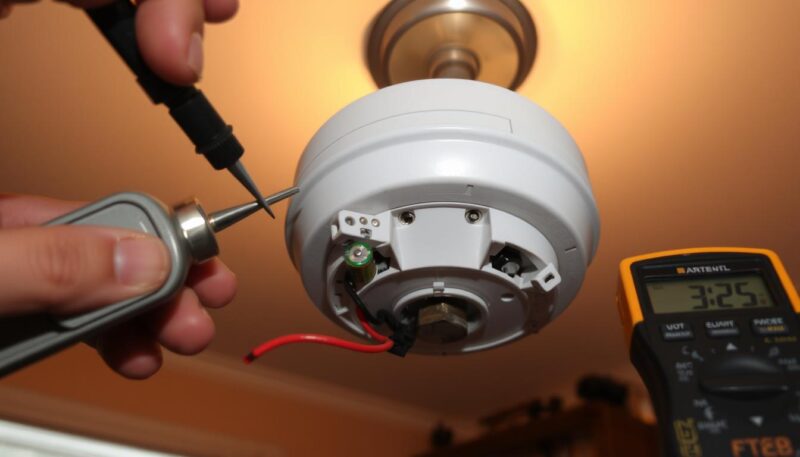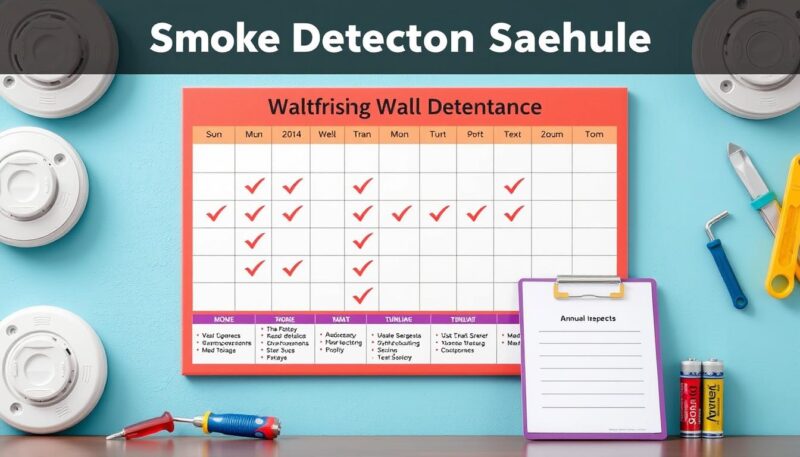Ensuring that your smoke detectors are in working order is a crucial aspect of keeping your home safe. According to statistics, nearly 60% of fire-related deaths in American homes occurred in residences with smoke alarms that were either missing or not functioning. This highlights the importance of being proactive about smoke detector repair and maintenance. Understanding and troubleshooting common issues can significantly improve the reliability and effectiveness of these essential safety devices.
In this article, we’ll walk you through various troubleshooting tips, expert advice, and safety protocols for addressing frequent problems with smoke detectors. You will learn the specific steps needed to diagnose issues like periodic beeping, false alarms, and power failures. We’ll also discuss the differences between ionization and photoelectric smoke detectors, and why it’s important to understand their unique functionalities.
By following our guidance, you’ll be better equipped to keep your smoke alarms in top-notch condition, thereby enhancing your home’s safety measures. Let’s dive into how to troubleshoot the common issues you may encounter with your smoke detectors.
So grab your tools, get ready to follow along, and ensure your home is as safe as possible from the threat of fire.
Common Smoke Detector Problems and Their Causes
Smoke detectors play a crucial role in safeguarding homes from fire hazards. However, these devices can sometimes encounter issues that can be frustrating and potentially dangerous. Recognizing false alarms and understanding smoke detector types can help you troubleshoot these problems efficiently.
Periodic Beeping and Chirping
One of the most common complaints about smoke detectors is periodic beeping or chirping. This is often a sign that the batteries are low and need replacing. Regular maintenance, such as replacing batteries every six months, ensures your smoke detectors function optimally.
However, if the beeping persists even after changing the batteries, the cause might be more intricate. Loose wiring, dust accumulation, or nearing the end of its operational life could be the culprits. It’s essential to follow installation guidelines properly to avoid wiring issues and to regularly clean the detector to prevent dust from causing problems.
False Alarms
False alarms can be not only annoying but also dangerous, as they might lead to ignoring genuine alerts. Understanding smoke detector types is vital for recognizing false alarms and identifying their causes. Environmental factors such as high humidity, steam from showers, or even cooking fumes can trigger false alerts. Alarm sensitivity adjustments can mitigate some of these issues, ensuring that the smoke detector is less likely to sound during these normal activities.
Dust, chemical aerosols, and other particulate matter can also lead to unnecessary alarm triggers. Regular cleaning and dusting can help maintain the detector’s performance. If your smoke detector continues to trigger false alarms frequently, it might be time to consider a replacement, especially if the unit is close to or has surpassed its typical lifespan of around ten years.
Maintenance Tips for Optimal Performance
Ensuring your smoke detectors are in optimal working condition is crucial for the safety of your home. Following a consistent maintenance schedule can significantly improve the effectiveness of your alarms. Nearly 60% of fire deaths occur in homes without functional smoke alarms, making it vital to keep them well-maintained.
Testing Smoke Detectors
Regularly testing smoke detectors is essential. You should test your alarms at least once a month by pressing the test button. Listening for a strong, piercing sound confirms the alarm’s functionality. Frequent testing can ensure that your detectors will alert you in case of a fire, cutting the risk of dying in a home fire by 50%.
Battery Replacement Schedule
Maintaining a regular battery replacement schedule is key to the optimal performance of your smoke detectors. Experts recommend annual battery replacement to ensure the alarms work correctly. For older detectors, changing long-life batteries annually is advised to sustain effectiveness. Remember, non-functional alarms often result from dead batteries.
Cleaning and Dusting
Knowing how to clean smoke detectors effectively can prevent false alarms and maintain their reliability. Dust and debris accumulation can lead to faulty connections. It’s recommended to clean your smoke detectors with a vacuum cleaner or compressed air at least once a year. Regular cleaning ensures that pollutants do not hinder their performance.
| Maintenance Task | Recommended Frequency | Purpose |
|---|---|---|
| Testing Smoke Detectors | Monthly | Ensure operational status |
| Battery Replacement | Annually | Maintain power supply |
| Cleaning Detectors | Annually | Remove dust and pollutants |
By incorporating these maintenance tips into your routine, you can significantly enhance the performance of your smoke detectors, ensuring your home remains as safe as possible. Regular testing, replacing batteries, and thorough cleaning are simple yet powerful steps to safeguard your family and property.
Conclusion
Your smoke detector is a silent guardian, dedicated to ensuring your home’s safety. Routine maintenance and comprehensive checks, like the ones mentioned above, play an integral role in optimizing the performance of these essential safety devices. Remember, periodic beeping or false alarms are indicators that your smoke detector requires attention, whether it be a battery change, dust cleaning, or relocation away from vents and drafts.
Inspection and functional testing of smoke detectors should become a standard practice in your household. Reliable tools such as Testifire, Solo365, and SmokeSabre simplify this process, making it easier for you to maintain your smoke detection system effectively. Educate yourself and your family about the significance of these routine checks, and keep in mind that some smoke detectors come with built-in 10-year batteries, while others require an annual battery change.
Lastly, consider adding carbon monoxide detectors to your safety arsenal. These devices provide an extra layer of protection against the invisible threat of carbon monoxide gas, often caused by faulty heating systems and fuel-burning appliances. By adhering to maintenance schedules and using trustworthy testing equipment, you reinforce a proactive approach to home safety, ensuring that your family remains secure and safeguarded from potential hazards.


